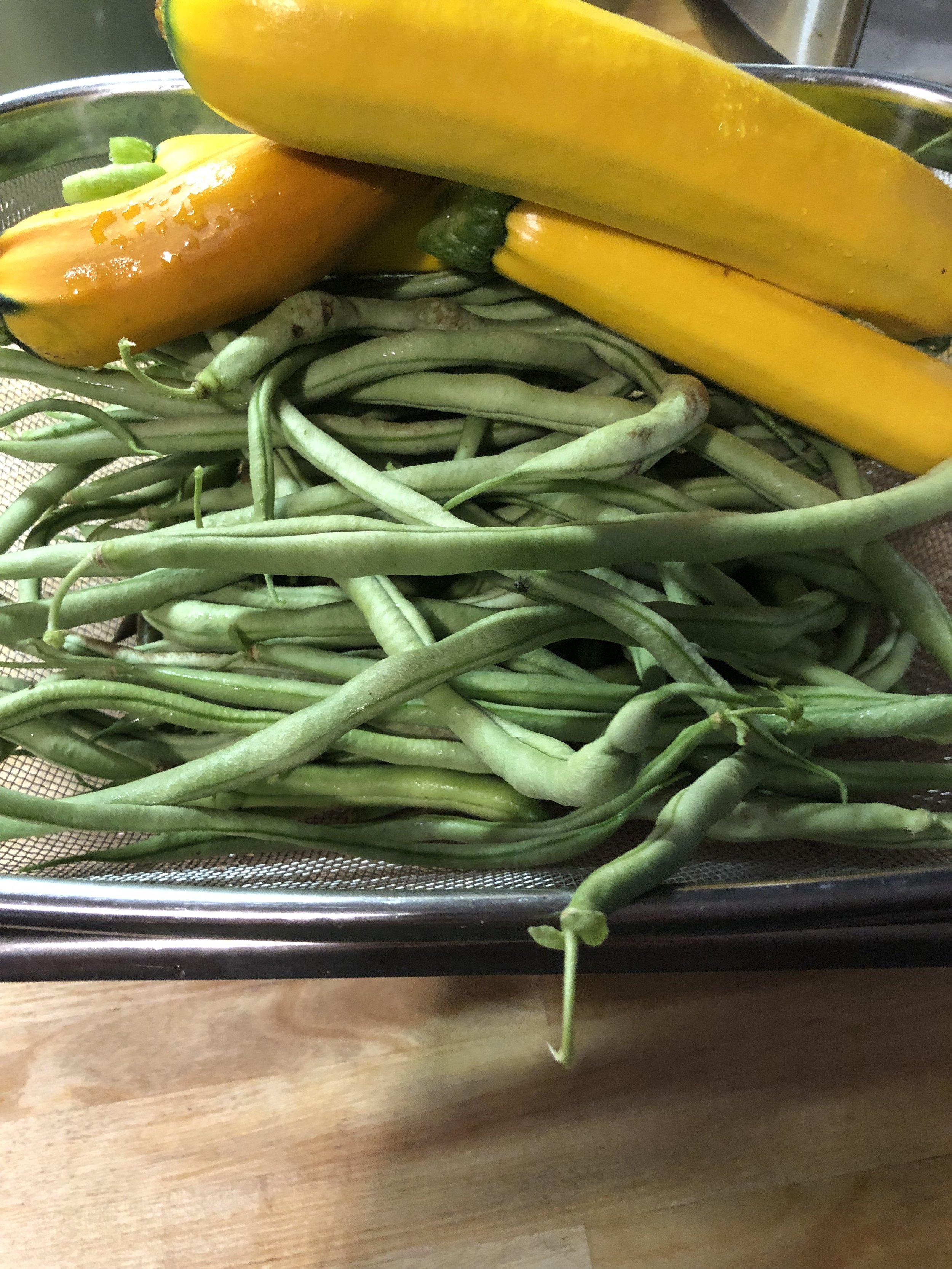All About Beans
One of the great producers of the garden, and one of the easiest to grow, is the bean. As long as the plants have a place to stretch their tendrils to reach for the sun, you’ll have a harvest that can feed you throughout the winter and beyond.
Beans like warm weather, so planting them after frost is wise. Stick your finger in the the soil, drop the dried bean in, and cover it. Make sure your location has sufficient sun, and also, in the case of vining beans, some type of trellis for them to climb on. Some people opt for something simple, like bamboo stakes with string tied horizontally to allow for climbing. Others purchase trellises that create a curved arbor, allowing one to walk under the mass of leaves and pods to admire and harvest the crop. In my own primitive garden, I used tree branches lashed together and staked into the garden, and the beans liked that just fine.
The variety of beans is wide, and you can choose how to harvest, store, and eat your beans. If you grow green beans, otherwise known as snap beans, make sure to pick them before the pods are too large, otherwise the shells will be fibrous and stringy, and will be quite annoying to eat. Young beans pods will yield tender green beans that you can sauté, can, pickle, or freeze (blanching for 3 minutes , or steaming and cooling first, of course).
Shell beans are another group of beans. They are grown for the seeds rather than the pods. Generally, you cannot eat these as green beans, but there are a couple of ways to harvest and store them. One way to store shell beans for future eating is to freeze them. This method eliminates having to soak beans overnight. Harvest the beans when the pods are filled, but before they have dried on the vine. Shell them and freeze them on a sheet pan. After frozen, you can put them in a freezer bag and they will stay separated. When you want to cook them, throw them in your soups and stews without having to soak the beans.
The second method is to store shell beans as dried beans. Leave them on the vine until they are completely dry and brittle. Remove the dried beans from their pods. If you find that the beans are not yet dry, wait a bit longer to harvest them. Store these in jars.
As many of you perhaps know, you must soak dried beans in water overnight, discard the water, then cook. An alternate method that I am quite fond of as it saves time (and allows me to cook beans even if I haven’t thought of it ahead of time!) is to use my instant pot. It’s as simple as pressure cooking them; most types of beans only require 30 minutes.
Finally, you can use your dried beans to continue your garden the following year! Beans truly are the gift that keeps on giving.




